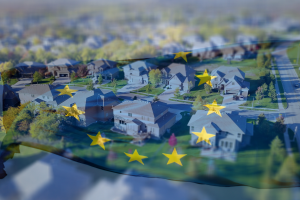
In the second quarter of 2023, the European real estate market witnessed notable fluctuations. According to Eurostat, the European statistics office, residential property prices in the euro area experienced a 1.7% decline compared to the same period last year, while the European Union as a whole recorded a 1.1% drop. This marks the first year-on-year decline in housing values in the EU since Q1 2014.

Interestingly, Slovenia stood out amidst this trend. The country experienced an impressive increase of 7.4% in house prices in Q2, defying the overall European decline.
In contrast, the first quarter of 2023 saw a 0.4% rise in house prices in the 20 euro countries, and a 0.8% increase for the entire Union on an annual basis.
A closer look at individual Member States reveals a diverse picture. While nine countries saw a decrease in house prices in the second quarter, 17 countries recorded an increase. Notably, Germany saw the steepest decline at -9.9%, followed by Denmark (-7.6%) and Sweden (-6.8%). Croatia, on the other hand, experienced a substantial surge with prices increasing by 13.7%.
Comparing Slovenia with the first quarter of 2023, the country outperformed the average with a 1.9% quarterly growth and a 0.1% rise in the euro area, and a 0.3% increase for the entire EU. Lithuania (+5.1%), Bulgaria (+4.3%), and Estonia (+3.8%) reported the highest price hikes in this quarterly comparison.
The Slovenian real estate market appears to be an exception to the general trends in the European Union. It remains to be seen how these patterns will evolve in the upcoming quarters and whether Slovenia’s real estate market will continue to thrive regardless of the wider regional circumstances.
ABC Novice. (2023, October 8). Nihanja cen stanovanjskih nepremičnin v Evropski uniji. 24ur novice. https://www.abcnovice.si/24ur-novice/svet-24ur-novice/nihanja-cen-stanovanjskih-nepremicnin-v-evropski-uniji/